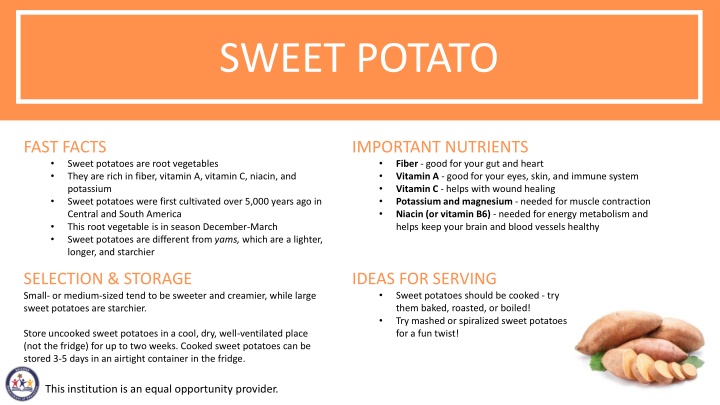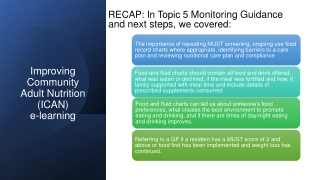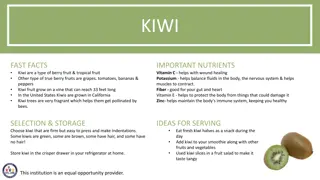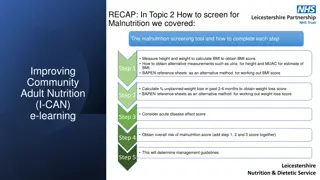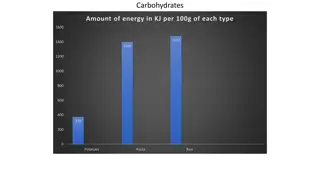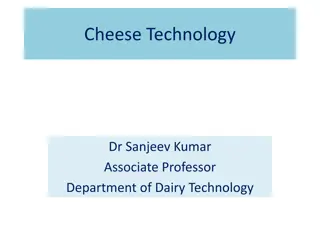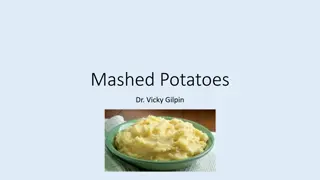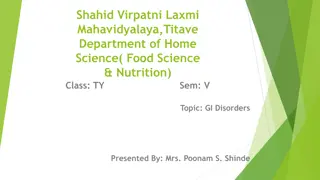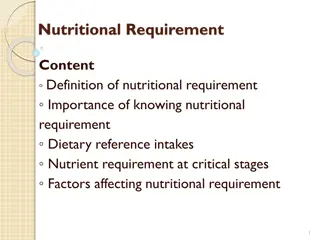Discover the Nutritional Benefits of Sweet Potatoes and Fun Activities to Explore
Explore the nutritional value of sweet potatoes, including fiber, vitamins, and minerals they offer. Learn interesting facts about their cultivation and ideal serving suggestions. Engage in exciting activities like a five senses exploration, poetry writing, and recipe invention centered around sweet potatoes. Test your knowledge with a check for understanding questions. Delve into the world of this versatile root vegetable!
Download Presentation

Please find below an Image/Link to download the presentation.
The content on the website is provided AS IS for your information and personal use only. It may not be sold, licensed, or shared on other websites without obtaining consent from the author.If you encounter any issues during the download, it is possible that the publisher has removed the file from their server.
You are allowed to download the files provided on this website for personal or commercial use, subject to the condition that they are used lawfully. All files are the property of their respective owners.
The content on the website is provided AS IS for your information and personal use only. It may not be sold, licensed, or shared on other websites without obtaining consent from the author.
E N D
Presentation Transcript
SWEET POTATO FAST FACTS IMPORTANT NUTRIENTS Fiber - good for your gut and heart Vitamin A - good for your eyes, skin, and immune system Vitamin C - helps with wound healing Potassium and magnesium - needed for muscle contraction Niacin (or vitamin B6) - needed for energy metabolism and helps keep your brain and blood vessels healthy Sweet potatoes are root vegetables They are rich in fiber, vitamin A, vitamin C, niacin, and potassium Sweet potatoes were first cultivated over 5,000 years ago in Central and South America This root vegetable is in season December-March Sweet potatoes are different from yams, which are a lighter, longer, and starchier IDEAS FOR SERVING Sweet potatoes should be cooked - try them baked, roasted, or boiled! Try mashed or spiralized sweet potatoes for a fun twist! SELECTION & STORAGE Small- or medium-sized tend to be sweeter and creamier, while large sweet potatoes are starchier. Store uncooked sweet potatoes in a cool, dry, well-ventilated place (not the fridge) for up to two weeks. Cooked sweet potatoes can be stored 3-5 days in an airtight container in the fridge. This institution is an equal opportunity provider.
SWEET POTATO ACTIVITIES Five Senses Fun! Use your five senses to describe how sweet potatoes look, feel, taste, sound, and smell. Poetry Write a poem about the health benefits of sweet potato. Share with the class! Measure Up Measure the circumference of your sweet potato (whole potato or pieces). Write a Recipe Invent a new recipe that includes sweet potato as one of the ingredients. Compare & Contrast Make a list of similarities and a list of differences between sweet potatoes and white potatoes. How are they similar? What are the key differences? Watch a Video Find and watch a video online that shows how sweet potato is grown, harvested, and distributed in the United States.
SWEET POTATO CHECK FOR UNDERSTANDING What are some examples of other root vegetables? When should you plant a sweet potato? When are they in season? Why is eating sweet potato good for your health? What should you look for when selecting sweet potato at the store? What is your favorite way to eat sweet potato?
SWEET POTATO CHECK FOR UNDERSTANDING What are some examples of other root vegetables? Examples: potatoes, carrots, radishes, yams, jicama, etc When should you plant a sweet potato? When are they in season? Example: Sweet potatoes are planted in February-June and are in season December-March Why is eating sweet potato good for your health? Examples: provides essential vitamins and minerals, good source of fiber, etc. What should you look for when selecting sweet potato at the store? Example: Look for small or medium-sized for creamier potatoes, no soft spots, etc. What is your favorite way to eat sweet potato? Examples: mashed, diced and roasted, baked sweet potato, etc
SWEET POTATO REFERENCES Consultative Group on International Agricultural Research (2005). Sweet potato. Retrieved from https://web.archive.org/web/20050207230303/http://www.cgiar.org/impact/research/sweetpotato.html Arizona Farm Bureau (n.d.). Arizona Produce in Season. Retrieved from https://fillyourplate.org/produce-season.html.
